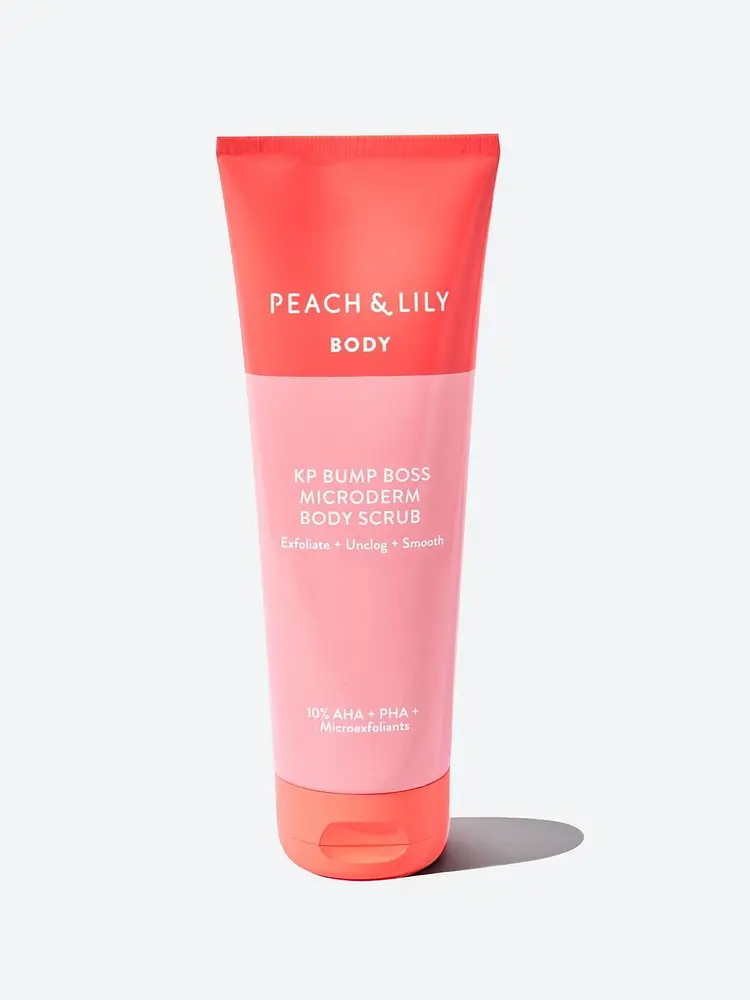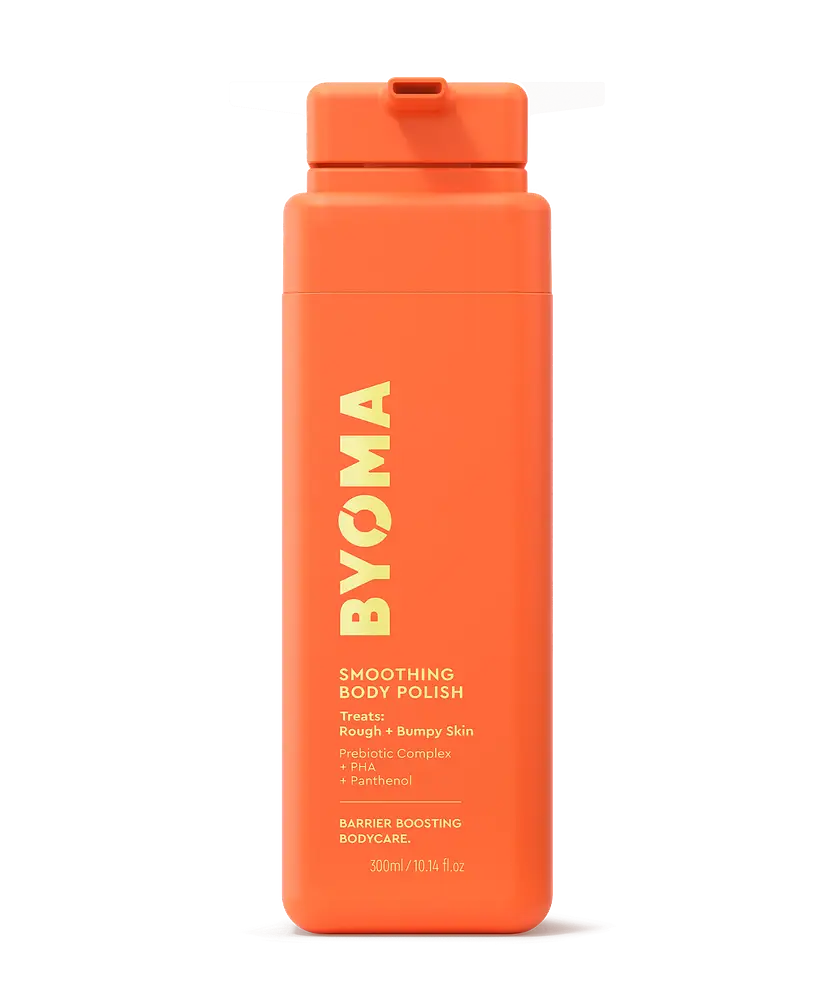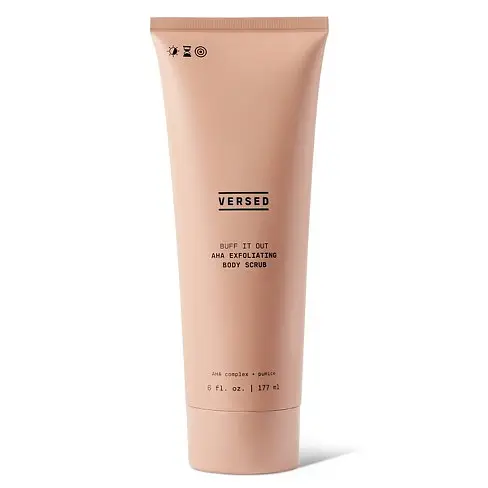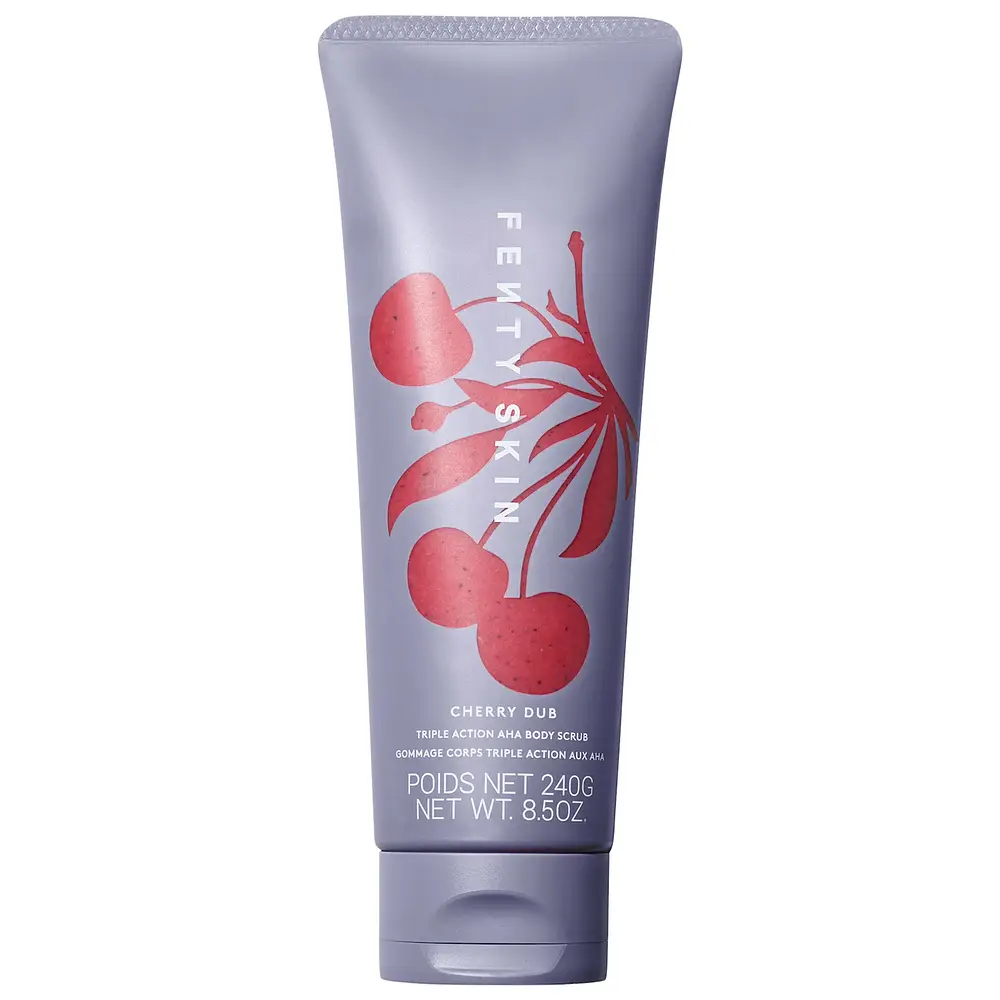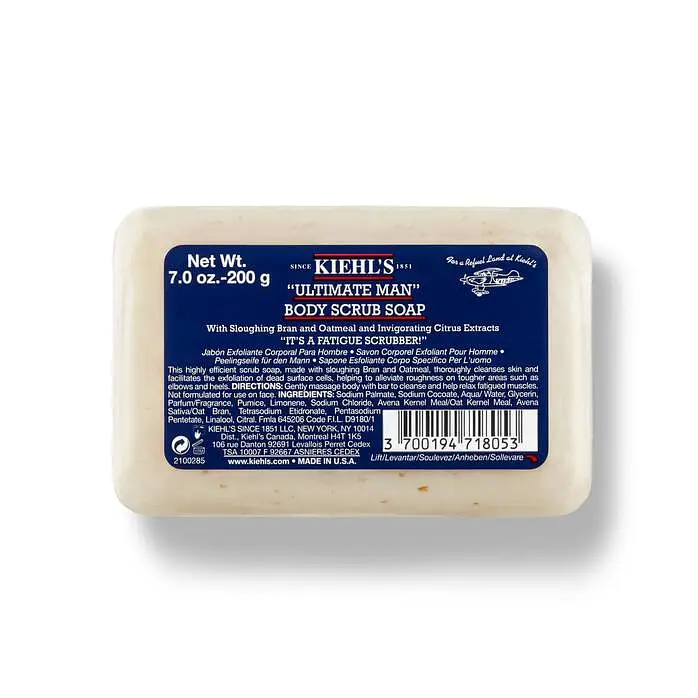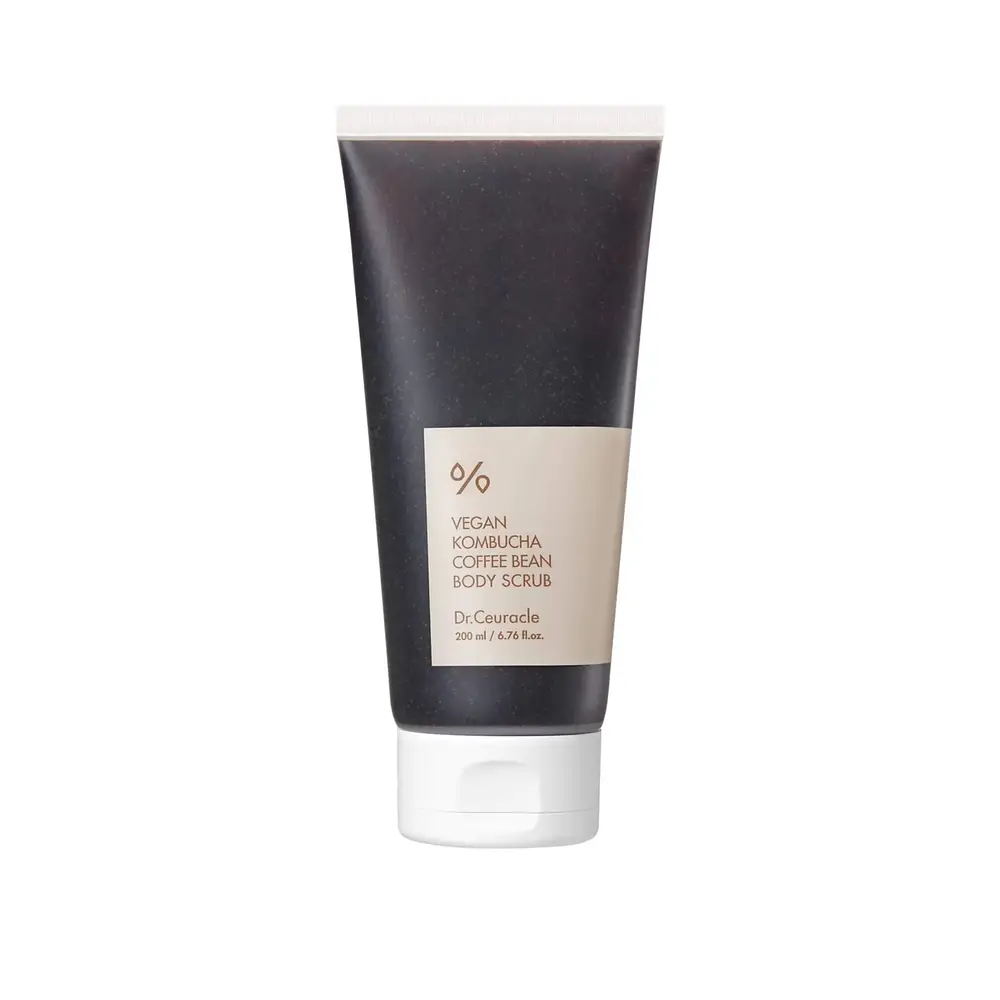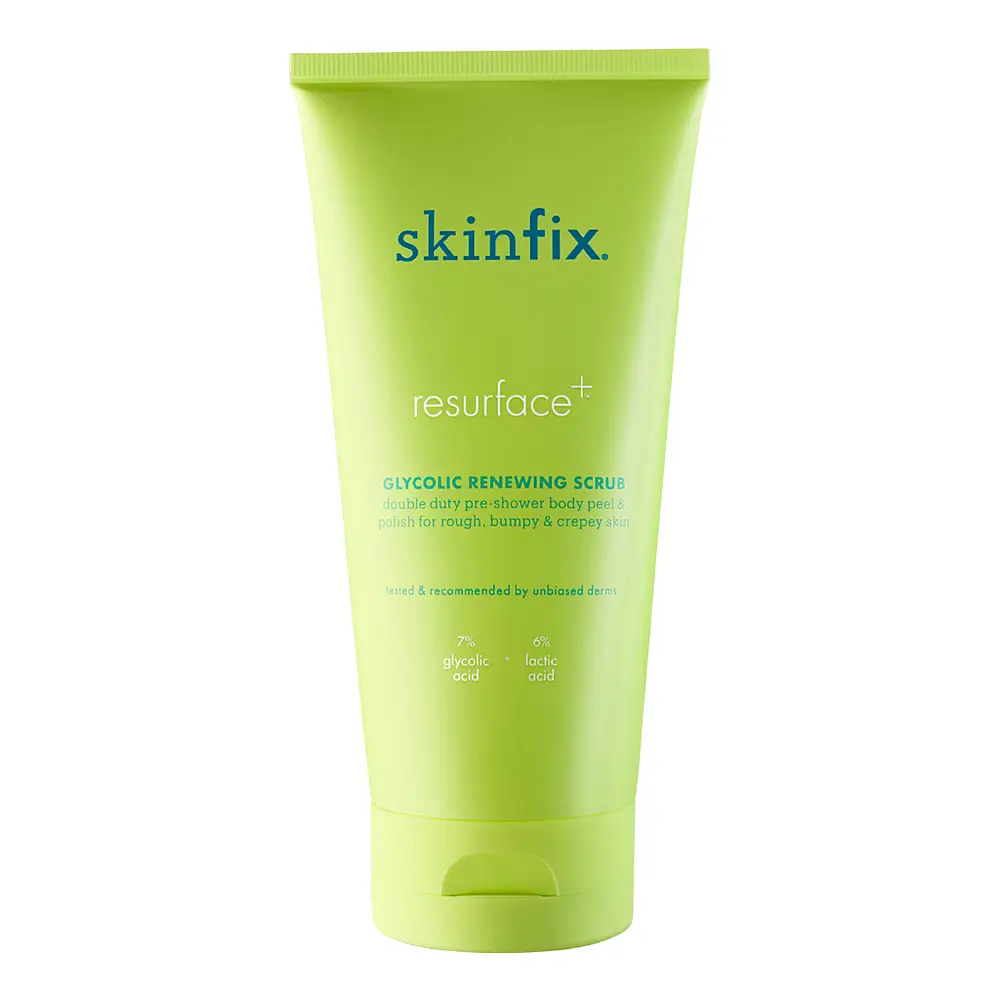Products Scan Our science '%20fill='black'/%3e%3c/svg%3e)
Skincare 
Bath & Body 
Make up 
Trending 
Skincare
Moisturizers
Treatments
Cleansers
Eye Care
Bath & Body
Make up

Hover to see details. On mobile? Tap for ingredient stories!
Full Ingredient List (INCI):




































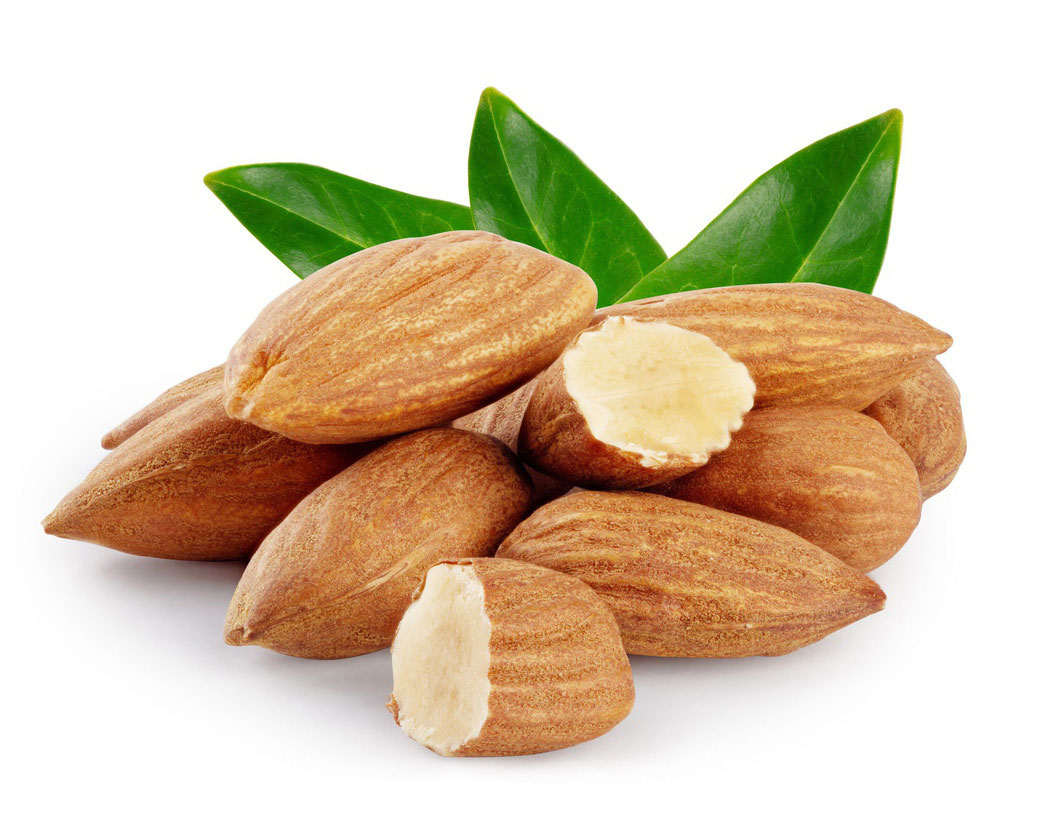

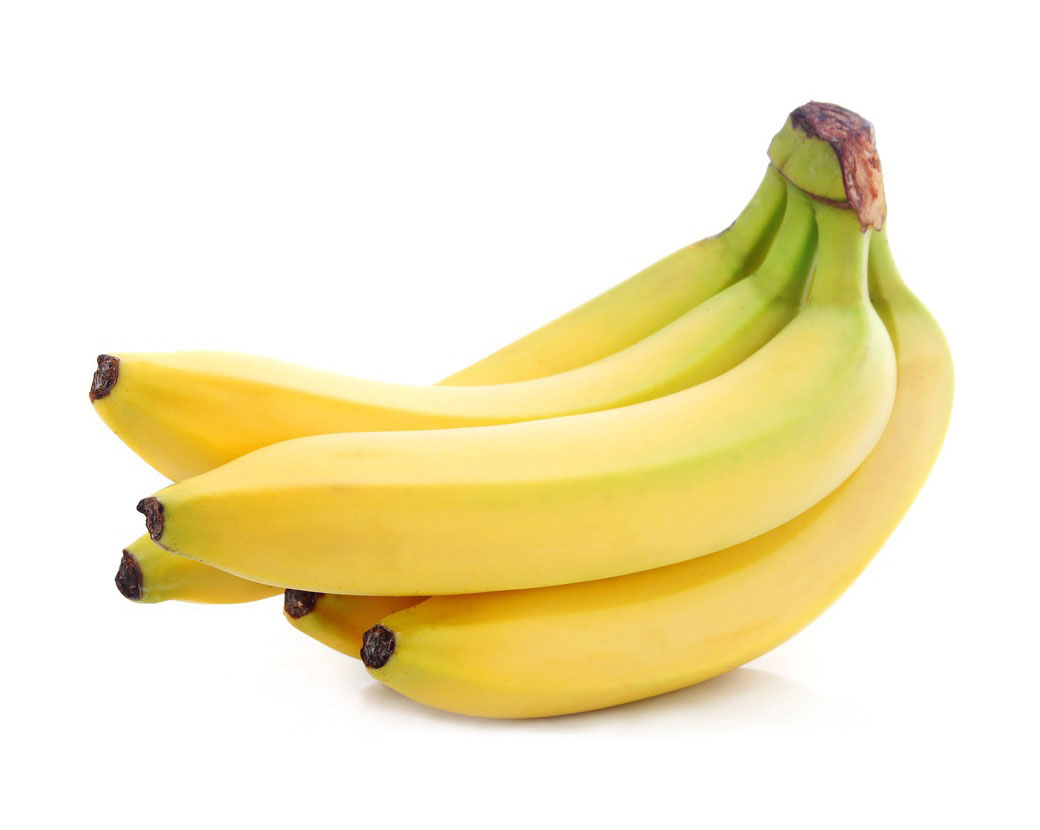









|
Est. %
The Estimated % is our algorithm-based assumption about an ingredient's concentration in a formula. Learn more The Estimated % is our algorithm-based assumption about an ingredient's concentration in a formula. Learn more | Ingredient | Origin | Functions | |
|---|---|---|---|---|
| 45 | Glycerin  The most popular moisturizing ingredient in the world. It is a powerful humectant – cheap yet very effective. Glycerin  The most popular moisturizing ingredient in the world. It is a powerful humectant – cheap yet very effective. | Botanical Ingredients derived from plants, mosses, and lichens: extracts, oils, powders, juices and other types of processed plant materials. Botanical Ingredients derived from plants, mosses, and lichens: extracts, oils, powders, juices and other types of processed plant materials. Synthetic All kinds of ingredients formulated or produced by a chemical process, or those that have a chemical modification in their structure. Synthetic All kinds of ingredients formulated or produced by a chemical process, or those that have a chemical modification in their structure. Animal Ingredients derived from animals (including birds, fish, crustaceans, mollusks, and insects) or produced by animals (e.g. dairy- and egg-derived ingredients, bee products, silk, pearls, etc.) Animal Ingredients derived from animals (including birds, fish, crustaceans, mollusks, and insects) or produced by animals (e.g. dairy- and egg-derived ingredients, bee products, silk, pearls, etc.) | Moisturizing (Humectant) Humectants are moisturizing ingredients that draw moisture to the skin, either from deeper layers or from the environment (when it's humid). Moisturizing (Humectant) Humectants are moisturizing ingredients that draw moisture to the skin, either from deeper layers or from the environment (when it's humid). Emollient Emollients fill the micro-cracks in the skin and leave it feeling soft and pleasant to the touch. Emollients are often mistakenly perceived as moisturizing ingredients. Emollient Emollients fill the micro-cracks in the skin and leave it feeling soft and pleasant to the touch. Emollients are often mistakenly perceived as moisturizing ingredients. Fragrance Fragrance ingredients add scent to a product or hide ('mask') the undesired aroma of other ingredients. Fragrance Fragrance ingredients add scent to a product or hide ('mask') the undesired aroma of other ingredients. Formula helper
Formula helper
| |
| 22 | Sodium Chloride  You’re definitely familiar with sodium chloride, even if you don’t think you are. It’s table salt! Salt works well with some cleansing ingredients (surfactants) to thicken them into gels. It also acts as a stabilizer for water-in-oil emulsions. Sodium Chloride  You’re definitely familiar with sodium chloride, even if you don’t think you are. It’s table salt! Salt works well with some cleansing ingredients (surfactants) to thicken them into gels. It also acts as a stabilizer for water-in-oil emulsions. | Naturally occurring These are ingredients initially present in nature, such as elements (Zinc, Gold, or Silver), minerals, or water. Naturally occurring These are ingredients initially present in nature, such as elements (Zinc, Gold, or Silver), minerals, or water. Synthetic All kinds of ingredients formulated or produced by a chemical process, or those that have a chemical modification in their structure. Synthetic All kinds of ingredients formulated or produced by a chemical process, or those that have a chemical modification in their structure. | Fragrance Fragrance ingredients add scent to a product or hide ('mask') the undesired aroma of other ingredients. Fragrance Fragrance ingredients add scent to a product or hide ('mask') the undesired aroma of other ingredients. Flavor Flavor ingredients bring sweetness to a product or are used to recreate various tastes. Flavor Flavor ingredients bring sweetness to a product or are used to recreate various tastes. Formula helper
Formula helper
| |
| 11 | Sea Salt  A mixture of minerals from saltwater. The studies show that sea salt may help to restore skin health by improving skin barrier function, improving moisturization, reducing inflammation, and reducing skin roughness and redness. Sea Salt  A mixture of minerals from saltwater. The studies show that sea salt may help to restore skin health by improving skin barrier function, improving moisturization, reducing inflammation, and reducing skin roughness and redness. | Naturally occurring These are ingredients initially present in nature, such as elements (Zinc, Gold, or Silver), minerals, or water. Naturally occurring These are ingredients initially present in nature, such as elements (Zinc, Gold, or Silver), minerals, or water. | Moisturizing (Humectant) Humectants are moisturizing ingredients that draw moisture to the skin, either from deeper layers or from the environment (when it's humid). Moisturizing (Humectant) Humectants are moisturizing ingredients that draw moisture to the skin, either from deeper layers or from the environment (when it's humid). Abrasive Abrasives 'physically' exfoliate the skin (i.e., manually remove dead skin cells) by rubbing against its surface. Abrasive Abrasives 'physically' exfoliate the skin (i.e., manually remove dead skin cells) by rubbing against its surface. | |
| 6 | Sucrose  This ingredient is more commonly known as table sugar or saccharose and is derived from sugar beets or sugar cane. It is used as a humectant moisturizing ingredient in skincare products, as well as a sweetener. Sucrose  This ingredient is more commonly known as table sugar or saccharose and is derived from sugar beets or sugar cane. It is used as a humectant moisturizing ingredient in skincare products, as well as a sweetener. | Botanical Ingredients derived from plants, mosses, and lichens: extracts, oils, powders, juices and other types of processed plant materials. Botanical Ingredients derived from plants, mosses, and lichens: extracts, oils, powders, juices and other types of processed plant materials. Synthetic All kinds of ingredients formulated or produced by a chemical process, or those that have a chemical modification in their structure. Synthetic All kinds of ingredients formulated or produced by a chemical process, or those that have a chemical modification in their structure. | Moisturizing (Humectant) Humectants are moisturizing ingredients that draw moisture to the skin, either from deeper layers or from the environment (when it's humid). Moisturizing (Humectant) Humectants are moisturizing ingredients that draw moisture to the skin, either from deeper layers or from the environment (when it's humid). Soothing Soothing ingredients reduce the signs of sensitivity in irritated and inflamed skin. This includes anti-inflammatory ingredients, anti-itch agents, and topical analgesics. Soothing Soothing ingredients reduce the signs of sensitivity in irritated and inflamed skin. This includes anti-inflammatory ingredients, anti-itch agents, and topical analgesics. Flavor Flavor ingredients bring sweetness to a product or are used to recreate various tastes. Flavor Flavor ingredients bring sweetness to a product or are used to recreate various tastes. | |
| 4 | Glyceryl Stearate  An emollient and emulsifier typically derived from vegetable sources through a chemical reaction with glycerin. It provides stability, texture, and consistency to formulations. Its main function is to allow oil and water to mix. Glyceryl Stearate  An emollient and emulsifier typically derived from vegetable sources through a chemical reaction with glycerin. It provides stability, texture, and consistency to formulations. Its main function is to allow oil and water to mix. | Botanical Ingredients derived from plants, mosses, and lichens: extracts, oils, powders, juices and other types of processed plant materials. Botanical Ingredients derived from plants, mosses, and lichens: extracts, oils, powders, juices and other types of processed plant materials. Synthetic All kinds of ingredients formulated or produced by a chemical process, or those that have a chemical modification in their structure. Synthetic All kinds of ingredients formulated or produced by a chemical process, or those that have a chemical modification in their structure. | Emollient Emollients fill the micro-cracks in the skin and leave it feeling soft and pleasant to the touch. Emollients are often mistakenly perceived as moisturizing ingredients. Emollient Emollients fill the micro-cracks in the skin and leave it feeling soft and pleasant to the touch. Emollients are often mistakenly perceived as moisturizing ingredients. Fragrance Fragrance ingredients add scent to a product or hide ('mask') the undesired aroma of other ingredients. Fragrance Fragrance ingredients add scent to a product or hide ('mask') the undesired aroma of other ingredients. Formula helper
Formula helper
| |
| 3 | Polysorbate 20  A viscous, amber-colored liquid that functions as a solubilizer to disperse small amounts of oil into a large water phase. Polysorbate 20 is frequently used to solubilize fragrance oils into water-based emulsions. Polysorbate 20  A viscous, amber-colored liquid that functions as a solubilizer to disperse small amounts of oil into a large water phase. Polysorbate 20 is frequently used to solubilize fragrance oils into water-based emulsions. | Botanical Ingredients derived from plants, mosses, and lichens: extracts, oils, powders, juices and other types of processed plant materials. Botanical Ingredients derived from plants, mosses, and lichens: extracts, oils, powders, juices and other types of processed plant materials. Synthetic All kinds of ingredients formulated or produced by a chemical process, or those that have a chemical modification in their structure. Synthetic All kinds of ingredients formulated or produced by a chemical process, or those that have a chemical modification in their structure. | Fragrance Fragrance ingredients add scent to a product or hide ('mask') the undesired aroma of other ingredients. Fragrance Fragrance ingredients add scent to a product or hide ('mask') the undesired aroma of other ingredients. Formula helper
Formula helper
| |
| 2 | Caprylic/Capric Triglyceride  A natural occlusive moisturizing and emollient ingredient, it is a blend of glycerin and two fatty acids, caprylic and capric acid. It creates an oil-based protective layer on the skin, thereby preventing water loss. Caprylic/Capric Triglyceride  A natural occlusive moisturizing and emollient ingredient, it is a blend of glycerin and two fatty acids, caprylic and capric acid. It creates an oil-based protective layer on the skin, thereby preventing water loss. | Botanical Ingredients derived from plants, mosses, and lichens: extracts, oils, powders, juices and other types of processed plant materials. Botanical Ingredients derived from plants, mosses, and lichens: extracts, oils, powders, juices and other types of processed plant materials. Synthetic All kinds of ingredients formulated or produced by a chemical process, or those that have a chemical modification in their structure. Synthetic All kinds of ingredients formulated or produced by a chemical process, or those that have a chemical modification in their structure. | Moisturizing (Occlusive) Occlusives are moisturizing ingredients that seal moisture into the skin, forming a water-resistant barrier. Moisturizing (Occlusive) Occlusives are moisturizing ingredients that seal moisture into the skin, forming a water-resistant barrier. Emollient Emollients fill the micro-cracks in the skin and leave it feeling soft and pleasant to the touch. Emollients are often mistakenly perceived as moisturizing ingredients. Emollient Emollients fill the micro-cracks in the skin and leave it feeling soft and pleasant to the touch. Emollients are often mistakenly perceived as moisturizing ingredients. Fragrance Fragrance ingredients add scent to a product or hide ('mask') the undesired aroma of other ingredients. Fragrance Fragrance ingredients add scent to a product or hide ('mask') the undesired aroma of other ingredients. Formula helper
Formula helper
| |
| 1.5 | Butylene Glycol  A clear, colorless liquid humectant that draws moisture to the skin. The humectancy of butylene glycol, owed to its two hydroxyl groups, is quite considerable, although not as powerful as glycerin, which contains three hydroxyl groups. Butylene Glycol  A clear, colorless liquid humectant that draws moisture to the skin. The humectancy of butylene glycol, owed to its two hydroxyl groups, is quite considerable, although not as powerful as glycerin, which contains three hydroxyl groups. | Botanical Ingredients derived from plants, mosses, and lichens: extracts, oils, powders, juices and other types of processed plant materials. Botanical Ingredients derived from plants, mosses, and lichens: extracts, oils, powders, juices and other types of processed plant materials. Synthetic All kinds of ingredients formulated or produced by a chemical process, or those that have a chemical modification in their structure. Synthetic All kinds of ingredients formulated or produced by a chemical process, or those that have a chemical modification in their structure. Petroleum Ingredients derived from petroleum, also called crude oil. Crude oil deposits were obtained from the remains of ancient organisms, such as plants, algae, and bacteria. Petroleum Ingredients derived from petroleum, also called crude oil. Crude oil deposits were obtained from the remains of ancient organisms, such as plants, algae, and bacteria. | Moisturizing (Humectant) Humectants are moisturizing ingredients that draw moisture to the skin, either from deeper layers or from the environment (when it's humid). Moisturizing (Humectant) Humectants are moisturizing ingredients that draw moisture to the skin, either from deeper layers or from the environment (when it's humid). Fragrance Fragrance ingredients add scent to a product or hide ('mask') the undesired aroma of other ingredients. Fragrance Fragrance ingredients add scent to a product or hide ('mask') the undesired aroma of other ingredients. Formula helper
Formula helper
| |
| 1 | PEG-100 Stearate  This surfactant is more specifically classified as an emulsifier that produces oil-in-water emulsions. PEG-100 stearate can also be used as a cleansing agent. PEG-100 Stearate  This surfactant is more specifically classified as an emulsifier that produces oil-in-water emulsions. PEG-100 stearate can also be used as a cleansing agent. | Synthetic All kinds of ingredients formulated or produced by a chemical process, or those that have a chemical modification in their structure. Synthetic All kinds of ingredients formulated or produced by a chemical process, or those that have a chemical modification in their structure. | Cleansing Cleansing ingredients, also known as surfactants, clear dirt and buildup from the skin. Cleansing Cleansing ingredients, also known as surfactants, clear dirt and buildup from the skin. Formula helper
Formula helper
| |
| 0.3 | Hydrated Silica  A form of silicone dioxide, the major component of sand, that contains varying amounts of water. It has several purposes but is most commonly used as an abrasive (as an eco-conscious alternative to polyethylene microbeads). Hydrated Silica  A form of silicone dioxide, the major component of sand, that contains varying amounts of water. It has several purposes but is most commonly used as an abrasive (as an eco-conscious alternative to polyethylene microbeads). | Naturally occurring These are ingredients initially present in nature, such as elements (Zinc, Gold, or Silver), minerals, or water. Naturally occurring These are ingredients initially present in nature, such as elements (Zinc, Gold, or Silver), minerals, or water. | Abrasive Abrasives 'physically' exfoliate the skin (i.e., manually remove dead skin cells) by rubbing against its surface. Abrasive Abrasives 'physically' exfoliate the skin (i.e., manually remove dead skin cells) by rubbing against its surface. Formula helper
Formula helper
| |
| 0.3 | | Botanical Ingredients derived from plants, mosses, and lichens: extracts, oils, powders, juices and other types of processed plant materials. Botanical Ingredients derived from plants, mosses, and lichens: extracts, oils, powders, juices and other types of processed plant materials. | Abrasive Abrasives 'physically' exfoliate the skin (i.e., manually remove dead skin cells) by rubbing against its surface. Abrasive Abrasives 'physically' exfoliate the skin (i.e., manually remove dead skin cells) by rubbing against its surface. Formula helper
Formula helper
| |
| 0.3 | Water  The most used ingredient in skincare. Its concentration defines the product texture: rich creams may have about 50% of water while a light jelly about 90%. Water doesn’t moisturize the skin by itself and is used in skincare as a solvent for other ingredients. Water  The most used ingredient in skincare. Its concentration defines the product texture: rich creams may have about 50% of water while a light jelly about 90%. Water doesn’t moisturize the skin by itself and is used in skincare as a solvent for other ingredients. | Naturally occurring These are ingredients initially present in nature, such as elements (Zinc, Gold, or Silver), minerals, or water. Naturally occurring These are ingredients initially present in nature, such as elements (Zinc, Gold, or Silver), minerals, or water. | Formula helper
Formula helper
| |
| 0.3 | Butyrospermum Parkii (Shea) Butter  A semi-solid, buttery fat extracted from the seeds of the Shea tree that is a wonderful occlusive and emollient ingredient mainly comprised of fatty acids. Shea butter contains a large amount of anti-inflammatory and antioxidant compounds. Butyrospermum Parkii (Shea) Butter  A semi-solid, buttery fat extracted from the seeds of the Shea tree that is a wonderful occlusive and emollient ingredient mainly comprised of fatty acids. Shea butter contains a large amount of anti-inflammatory and antioxidant compounds. | Botanical Ingredients derived from plants, mosses, and lichens: extracts, oils, powders, juices and other types of processed plant materials. Botanical Ingredients derived from plants, mosses, and lichens: extracts, oils, powders, juices and other types of processed plant materials. | Moisturizing (Occlusive) Occlusives are moisturizing ingredients that seal moisture into the skin, forming a water-resistant barrier. Moisturizing (Occlusive) Occlusives are moisturizing ingredients that seal moisture into the skin, forming a water-resistant barrier. Emollient Emollients fill the micro-cracks in the skin and leave it feeling soft and pleasant to the touch. Emollients are often mistakenly perceived as moisturizing ingredients. Emollient Emollients fill the micro-cracks in the skin and leave it feeling soft and pleasant to the touch. Emollients are often mistakenly perceived as moisturizing ingredients. Formula helper
Formula helper
| |
| 0.3 | Fragrance  Under trade secret law, manufacturers have the right not to disclose what exactly went into the fragrance and use the unspecific word Fragrance or Parfum instead. Many fragrances are highly allergenic. Fragrance  Under trade secret law, manufacturers have the right not to disclose what exactly went into the fragrance and use the unspecific word Fragrance or Parfum instead. Many fragrances are highly allergenic. | Botanical Ingredients derived from plants, mosses, and lichens: extracts, oils, powders, juices and other types of processed plant materials. Botanical Ingredients derived from plants, mosses, and lichens: extracts, oils, powders, juices and other types of processed plant materials. Synthetic All kinds of ingredients formulated or produced by a chemical process, or those that have a chemical modification in their structure. Synthetic All kinds of ingredients formulated or produced by a chemical process, or those that have a chemical modification in their structure. Animal Ingredients derived from animals (including birds, fish, crustaceans, mollusks, and insects) or produced by animals (e.g. dairy- and egg-derived ingredients, bee products, silk, pearls, etc.) Animal Ingredients derived from animals (including birds, fish, crustaceans, mollusks, and insects) or produced by animals (e.g. dairy- and egg-derived ingredients, bee products, silk, pearls, etc.) | Fragrance Fragrance ingredients add scent to a product or hide ('mask') the undesired aroma of other ingredients. Fragrance Fragrance ingredients add scent to a product or hide ('mask') the undesired aroma of other ingredients. | |
| 0.3 | Benzyl Benzoate  A fragrance ingredient with a fruity and woody scent. It is considered an allergen according to the International Fragrance Association (IFRA), which means that care must be taken when determining usage levels in skincare products. Benzyl Benzoate  A fragrance ingredient with a fruity and woody scent. It is considered an allergen according to the International Fragrance Association (IFRA), which means that care must be taken when determining usage levels in skincare products. | Botanical Ingredients derived from plants, mosses, and lichens: extracts, oils, powders, juices and other types of processed plant materials. Botanical Ingredients derived from plants, mosses, and lichens: extracts, oils, powders, juices and other types of processed plant materials. Synthetic All kinds of ingredients formulated or produced by a chemical process, or those that have a chemical modification in their structure. Synthetic All kinds of ingredients formulated or produced by a chemical process, or those that have a chemical modification in their structure. | Antimicrobial Antimicrobials prevent the growth of harmful microorganisms on the skin. Antimicrobial Antimicrobials prevent the growth of harmful microorganisms on the skin. Fragrance Fragrance ingredients add scent to a product or hide ('mask') the undesired aroma of other ingredients. Fragrance Fragrance ingredients add scent to a product or hide ('mask') the undesired aroma of other ingredients. Formula helper
Formula helper
| |
| 0.3 | | Botanical Ingredients derived from plants, mosses, and lichens: extracts, oils, powders, juices and other types of processed plant materials. Botanical Ingredients derived from plants, mosses, and lichens: extracts, oils, powders, juices and other types of processed plant materials. | Exfoliant Exfoliants remove dead skin cells from the surface of the skin via acid-based chemical reactions (e.g., AHA or BHA). Exfoliant Exfoliants remove dead skin cells from the surface of the skin via acid-based chemical reactions (e.g., AHA or BHA). Abrasive Abrasives 'physically' exfoliate the skin (i.e., manually remove dead skin cells) by rubbing against its surface. Abrasive Abrasives 'physically' exfoliate the skin (i.e., manually remove dead skin cells) by rubbing against its surface. | |
| 0.3 | Dipropylene Glycol  A clear, colorless liquid that has several uses. One of its main functions is as a solvent. Dipropylene glycol is also used to reduce the thickness of skincare products. Dipropylene Glycol  A clear, colorless liquid that has several uses. One of its main functions is as a solvent. Dipropylene glycol is also used to reduce the thickness of skincare products. | Synthetic All kinds of ingredients formulated or produced by a chemical process, or those that have a chemical modification in their structure. Synthetic All kinds of ingredients formulated or produced by a chemical process, or those that have a chemical modification in their structure. | Fragrance Fragrance ingredients add scent to a product or hide ('mask') the undesired aroma of other ingredients. Fragrance Fragrance ingredients add scent to a product or hide ('mask') the undesired aroma of other ingredients. Formula helper
Formula helper
| |
| 0.3 | Honey  A supersaturated solution of sugars, proteins, vitamins, minerals, and bioactive compounds. It is used in skincare for its antimicrobial, emollient, moisturizing, and soothing properties. Honey  A supersaturated solution of sugars, proteins, vitamins, minerals, and bioactive compounds. It is used in skincare for its antimicrobial, emollient, moisturizing, and soothing properties. | Animal Ingredients derived from animals (including birds, fish, crustaceans, mollusks, and insects) or produced by animals (e.g. dairy- and egg-derived ingredients, bee products, silk, pearls, etc.) Animal Ingredients derived from animals (including birds, fish, crustaceans, mollusks, and insects) or produced by animals (e.g. dairy- and egg-derived ingredients, bee products, silk, pearls, etc.) | Moisturizing (Humectant) Humectants are moisturizing ingredients that draw moisture to the skin, either from deeper layers or from the environment (when it's humid). Moisturizing (Humectant) Humectants are moisturizing ingredients that draw moisture to the skin, either from deeper layers or from the environment (when it's humid). Soothing Soothing ingredients reduce the signs of sensitivity in irritated and inflamed skin. This includes anti-inflammatory ingredients, anti-itch agents, and topical analgesics. Soothing Soothing ingredients reduce the signs of sensitivity in irritated and inflamed skin. This includes anti-inflammatory ingredients, anti-itch agents, and topical analgesics. Emollient Emollients fill the micro-cracks in the skin and leave it feeling soft and pleasant to the touch. Emollients are often mistakenly perceived as moisturizing ingredients. Emollient Emollients fill the micro-cracks in the skin and leave it feeling soft and pleasant to the touch. Emollients are often mistakenly perceived as moisturizing ingredients. Antimicrobial Antimicrobials prevent the growth of harmful microorganisms on the skin. Antimicrobial Antimicrobials prevent the growth of harmful microorganisms on the skin. Flavor Flavor ingredients bring sweetness to a product or are used to recreate various tastes. Flavor Flavor ingredients bring sweetness to a product or are used to recreate various tastes. Formula helper
Formula helper
| |
| 0.3 | Prunus Amygdalus Dulcis (Sweet Almond) Seed Extract  Sweet almond seed extract is extracted either from whole hulled sweet almonds or from the almond press cake left over after oil pressing. It contains various organic acids, flavonoids, and tannins – which provide antioxidant effects in skincare.
Read more on almonds here: Prunus Amygdalus Dulcis (Sweet Almond) Oil. Prunus Amygdalus Dulcis (Sweet Almond) Seed Extract  Sweet almond seed extract is extracted either from whole hulled sweet almonds or from the almond press cake left over after oil pressing. It contains various organic acids, flavonoids, and tannins – which provide antioxidant effects in skincare.
Read more on almonds here: Prunus Amygdalus Dulcis (Sweet Almond) Oil. | Botanical Ingredients derived from plants, mosses, and lichens: extracts, oils, powders, juices and other types of processed plant materials. Botanical Ingredients derived from plants, mosses, and lichens: extracts, oils, powders, juices and other types of processed plant materials. | Antioxidant Antioxidants reduce the oxidative stress caused by free radicals and prevent accelerated skin aging. Antioxidant Antioxidants reduce the oxidative stress caused by free radicals and prevent accelerated skin aging. | |
| 0.3 | Musa Sapientum (Banana) Fruit Extract  An extract from bananas that has a variety of astringent and antioxidant phenolic compounds and that has a sweet, fruity aroma. Musa Sapientum (Banana) Fruit Extract  An extract from bananas that has a variety of astringent and antioxidant phenolic compounds and that has a sweet, fruity aroma. | Botanical Ingredients derived from plants, mosses, and lichens: extracts, oils, powders, juices and other types of processed plant materials. Botanical Ingredients derived from plants, mosses, and lichens: extracts, oils, powders, juices and other types of processed plant materials. | Antioxidant Antioxidants reduce the oxidative stress caused by free radicals and prevent accelerated skin aging. Antioxidant Antioxidants reduce the oxidative stress caused by free radicals and prevent accelerated skin aging. Astringent Astringent ingredients provide the skin with a tightened feeling, help to reduce the appearance of large pores, and assist in the healing of small cuts and wounds. Astringent Astringent ingredients provide the skin with a tightened feeling, help to reduce the appearance of large pores, and assist in the healing of small cuts and wounds. | |
| 0.3 | Benzyl Alcohol  A multifunctional ingredient that is supplied as a clear, colorless liquid. Its main function is as a flavoring agent and fragrance. It also acts as a broad-spectrum preservative, solvent, and viscosity-controlling agent that thins the product. Benzyl Alcohol  A multifunctional ingredient that is supplied as a clear, colorless liquid. Its main function is as a flavoring agent and fragrance. It also acts as a broad-spectrum preservative, solvent, and viscosity-controlling agent that thins the product. | Botanical Ingredients derived from plants, mosses, and lichens: extracts, oils, powders, juices and other types of processed plant materials. Botanical Ingredients derived from plants, mosses, and lichens: extracts, oils, powders, juices and other types of processed plant materials. Synthetic All kinds of ingredients formulated or produced by a chemical process, or those that have a chemical modification in their structure. Synthetic All kinds of ingredients formulated or produced by a chemical process, or those that have a chemical modification in their structure. | Fragrance Fragrance ingredients add scent to a product or hide ('mask') the undesired aroma of other ingredients. Fragrance Fragrance ingredients add scent to a product or hide ('mask') the undesired aroma of other ingredients. Preservative Preservatives prevent the growth of bacteria and fungi in a product. Preservative Preservatives prevent the growth of bacteria and fungi in a product. Flavor Flavor ingredients bring sweetness to a product or are used to recreate various tastes. Flavor Flavor ingredients bring sweetness to a product or are used to recreate various tastes. Formula helper
Formula helper
| |
| 0.3 | Phenoxyethanol  The most frequently used preservative in skincare. It is a clear, oil-like liquid synthetic substance that protects products from harmful bacteria and yeast, whilst still leaving skin microflora unharmed. It is confirmed by research to be harmless. Phenoxyethanol  The most frequently used preservative in skincare. It is a clear, oil-like liquid synthetic substance that protects products from harmful bacteria and yeast, whilst still leaving skin microflora unharmed. It is confirmed by research to be harmless. | Synthetic All kinds of ingredients formulated or produced by a chemical process, or those that have a chemical modification in their structure. Synthetic All kinds of ingredients formulated or produced by a chemical process, or those that have a chemical modification in their structure. | Antimicrobial Antimicrobials prevent the growth of harmful microorganisms on the skin. Antimicrobial Antimicrobials prevent the growth of harmful microorganisms on the skin. Preservative Preservatives prevent the growth of bacteria and fungi in a product. Preservative Preservatives prevent the growth of bacteria and fungi in a product. | |
| 0.3 | | Synthetic All kinds of ingredients formulated or produced by a chemical process, or those that have a chemical modification in their structure. Synthetic All kinds of ingredients formulated or produced by a chemical process, or those that have a chemical modification in their structure. | Fragrance Fragrance ingredients add scent to a product or hide ('mask') the undesired aroma of other ingredients. Fragrance Fragrance ingredients add scent to a product or hide ('mask') the undesired aroma of other ingredients. Formula helper
Formula helper
| |
| 0.3 | Benzoic Acid  A preservative effective against fungi, yeast, and some bacteria. It is commonly paired with phenoxyethanol to create a broad spectrum preservation system. Benzoic acid can also serve as a pH adjuster, fragrance, and bulking agent. Benzoic Acid  A preservative effective against fungi, yeast, and some bacteria. It is commonly paired with phenoxyethanol to create a broad spectrum preservation system. Benzoic acid can also serve as a pH adjuster, fragrance, and bulking agent. | Botanical Ingredients derived from plants, mosses, and lichens: extracts, oils, powders, juices and other types of processed plant materials. Botanical Ingredients derived from plants, mosses, and lichens: extracts, oils, powders, juices and other types of processed plant materials. Synthetic All kinds of ingredients formulated or produced by a chemical process, or those that have a chemical modification in their structure. Synthetic All kinds of ingredients formulated or produced by a chemical process, or those that have a chemical modification in their structure. | Fragrance Fragrance ingredients add scent to a product or hide ('mask') the undesired aroma of other ingredients. Fragrance Fragrance ingredients add scent to a product or hide ('mask') the undesired aroma of other ingredients. Preservative Preservatives prevent the growth of bacteria and fungi in a product. Preservative Preservatives prevent the growth of bacteria and fungi in a product. Formula helper
Formula helper
| |
| 45  Glycerin Function: Moisturizing (Humectant), Moisturizing (Humectant) Humectants are moisturizing ingredients that draw moisture to the skin, either from deeper layers or from the environment (when it's humid). Moisturizing (Humectant), Moisturizing (Humectant) Humectants are moisturizing ingredients that draw moisture to the skin, either from deeper layers or from the environment (when it's humid). Emollient, Emollient Emollients fill the micro-cracks in the skin and leave it feeling soft and pleasant to the touch. Emollients are often mistakenly perceived as moisturizing ingredients. Emollient, Emollient Emollients fill the micro-cracks in the skin and leave it feeling soft and pleasant to the touch. Emollients are often mistakenly perceived as moisturizing ingredients. Fragrance, Fragrance Fragrance ingredients add scent to a product or hide ('mask') the undesired aroma of other ingredients. Fragrance, Fragrance Fragrance ingredients add scent to a product or hide ('mask') the undesired aroma of other ingredients. Formula helper Formula helper
Formula helper Formula helper
Origin: Botanical, Botanical Ingredients derived from plants, mosses, and lichens: extracts, oils, powders, juices and other types of processed plant materials. Botanical, Botanical Ingredients derived from plants, mosses, and lichens: extracts, oils, powders, juices and other types of processed plant materials. Synthetic, Synthetic All kinds of ingredients formulated or produced by a chemical process, or those that have a chemical modification in their structure. Synthetic, Synthetic All kinds of ingredients formulated or produced by a chemical process, or those that have a chemical modification in their structure. Animal Animal Ingredients derived from animals (including birds, fish, crustaceans, mollusks, and insects) or produced by animals (e.g. dairy- and egg-derived ingredients, bee products, silk, pearls, etc.) Animal Animal Ingredients derived from animals (including birds, fish, crustaceans, mollusks, and insects) or produced by animals (e.g. dairy- and egg-derived ingredients, bee products, silk, pearls, etc.) |
| 22  Sodium Chloride Function: Fragrance, Fragrance Fragrance ingredients add scent to a product or hide ('mask') the undesired aroma of other ingredients. Fragrance, Fragrance Fragrance ingredients add scent to a product or hide ('mask') the undesired aroma of other ingredients. Flavor, Flavor Flavor ingredients bring sweetness to a product or are used to recreate various tastes. Flavor, Flavor Flavor ingredients bring sweetness to a product or are used to recreate various tastes. Formula helper Formula helper
Formula helper Formula helper
Origin: Naturally occurring, Naturally occurring These are ingredients initially present in nature, such as elements (Zinc, Gold, or Silver), minerals, or water. Naturally occurring, Naturally occurring These are ingredients initially present in nature, such as elements (Zinc, Gold, or Silver), minerals, or water. Synthetic Synthetic All kinds of ingredients formulated or produced by a chemical process, or those that have a chemical modification in their structure. Synthetic Synthetic All kinds of ingredients formulated or produced by a chemical process, or those that have a chemical modification in their structure. |
| 11  Sea Salt Function: Moisturizing (Humectant), Moisturizing (Humectant) Humectants are moisturizing ingredients that draw moisture to the skin, either from deeper layers or from the environment (when it's humid). Moisturizing (Humectant), Moisturizing (Humectant) Humectants are moisturizing ingredients that draw moisture to the skin, either from deeper layers or from the environment (when it's humid). Abrasive Abrasive Abrasives 'physically' exfoliate the skin (i.e., manually remove dead skin cells) by rubbing against its surface. Abrasive Abrasive Abrasives 'physically' exfoliate the skin (i.e., manually remove dead skin cells) by rubbing against its surface. Origin: Naturally occurring Naturally occurring These are ingredients initially present in nature, such as elements (Zinc, Gold, or Silver), minerals, or water. Naturally occurring Naturally occurring These are ingredients initially present in nature, such as elements (Zinc, Gold, or Silver), minerals, or water. |
| 6  Sucrose Function: Moisturizing (Humectant), Moisturizing (Humectant) Humectants are moisturizing ingredients that draw moisture to the skin, either from deeper layers or from the environment (when it's humid). Moisturizing (Humectant), Moisturizing (Humectant) Humectants are moisturizing ingredients that draw moisture to the skin, either from deeper layers or from the environment (when it's humid). Soothing, Soothing Soothing ingredients reduce the signs of sensitivity in irritated and inflamed skin. This includes anti-inflammatory ingredients, anti-itch agents, and topical analgesics. Soothing, Soothing Soothing ingredients reduce the signs of sensitivity in irritated and inflamed skin. This includes anti-inflammatory ingredients, anti-itch agents, and topical analgesics. Flavor Flavor Flavor ingredients bring sweetness to a product or are used to recreate various tastes. Flavor Flavor Flavor ingredients bring sweetness to a product or are used to recreate various tastes. Origin: Botanical, Botanical Ingredients derived from plants, mosses, and lichens: extracts, oils, powders, juices and other types of processed plant materials. Botanical, Botanical Ingredients derived from plants, mosses, and lichens: extracts, oils, powders, juices and other types of processed plant materials. Synthetic Synthetic All kinds of ingredients formulated or produced by a chemical process, or those that have a chemical modification in their structure. Synthetic Synthetic All kinds of ingredients formulated or produced by a chemical process, or those that have a chemical modification in their structure. |
| 4  Glyceryl Stearate Function: Emollient, Emollient Emollients fill the micro-cracks in the skin and leave it feeling soft and pleasant to the touch. Emollients are often mistakenly perceived as moisturizing ingredients. Emollient, Emollient Emollients fill the micro-cracks in the skin and leave it feeling soft and pleasant to the touch. Emollients are often mistakenly perceived as moisturizing ingredients. Fragrance, Fragrance Fragrance ingredients add scent to a product or hide ('mask') the undesired aroma of other ingredients. Fragrance, Fragrance Fragrance ingredients add scent to a product or hide ('mask') the undesired aroma of other ingredients. Formula helper Formula helper
Formula helper Formula helper
Origin: Botanical, Botanical Ingredients derived from plants, mosses, and lichens: extracts, oils, powders, juices and other types of processed plant materials. Botanical, Botanical Ingredients derived from plants, mosses, and lichens: extracts, oils, powders, juices and other types of processed plant materials. Synthetic Synthetic All kinds of ingredients formulated or produced by a chemical process, or those that have a chemical modification in their structure. Synthetic Synthetic All kinds of ingredients formulated or produced by a chemical process, or those that have a chemical modification in their structure. |
| 3  Polysorbate 20 Function: Fragrance, Fragrance Fragrance ingredients add scent to a product or hide ('mask') the undesired aroma of other ingredients. Fragrance, Fragrance Fragrance ingredients add scent to a product or hide ('mask') the undesired aroma of other ingredients. Formula helper Formula helper
Formula helper Formula helper
Origin: Botanical, Botanical Ingredients derived from plants, mosses, and lichens: extracts, oils, powders, juices and other types of processed plant materials. Botanical, Botanical Ingredients derived from plants, mosses, and lichens: extracts, oils, powders, juices and other types of processed plant materials. Synthetic Synthetic All kinds of ingredients formulated or produced by a chemical process, or those that have a chemical modification in their structure. Synthetic Synthetic All kinds of ingredients formulated or produced by a chemical process, or those that have a chemical modification in their structure. |
| 2  Caprylic/Capric Triglyceride Function: Moisturizing (Occlusive), Moisturizing (Occlusive) Occlusives are moisturizing ingredients that seal moisture into the skin, forming a water-resistant barrier. Moisturizing (Occlusive), Moisturizing (Occlusive) Occlusives are moisturizing ingredients that seal moisture into the skin, forming a water-resistant barrier. Emollient, Emollient Emollients fill the micro-cracks in the skin and leave it feeling soft and pleasant to the touch. Emollients are often mistakenly perceived as moisturizing ingredients. Emollient, Emollient Emollients fill the micro-cracks in the skin and leave it feeling soft and pleasant to the touch. Emollients are often mistakenly perceived as moisturizing ingredients. Fragrance, Fragrance Fragrance ingredients add scent to a product or hide ('mask') the undesired aroma of other ingredients. Fragrance, Fragrance Fragrance ingredients add scent to a product or hide ('mask') the undesired aroma of other ingredients. Formula helper Formula helper
Formula helper Formula helper
Origin: Botanical, Botanical Ingredients derived from plants, mosses, and lichens: extracts, oils, powders, juices and other types of processed plant materials. Botanical, Botanical Ingredients derived from plants, mosses, and lichens: extracts, oils, powders, juices and other types of processed plant materials. Synthetic Synthetic All kinds of ingredients formulated or produced by a chemical process, or those that have a chemical modification in their structure. Synthetic Synthetic All kinds of ingredients formulated or produced by a chemical process, or those that have a chemical modification in their structure. |
| 1.5  Butylene Glycol Function: Moisturizing (Humectant), Moisturizing (Humectant) Humectants are moisturizing ingredients that draw moisture to the skin, either from deeper layers or from the environment (when it's humid). Moisturizing (Humectant), Moisturizing (Humectant) Humectants are moisturizing ingredients that draw moisture to the skin, either from deeper layers or from the environment (when it's humid). Fragrance, Fragrance Fragrance ingredients add scent to a product or hide ('mask') the undesired aroma of other ingredients. Fragrance, Fragrance Fragrance ingredients add scent to a product or hide ('mask') the undesired aroma of other ingredients. Formula helper Formula helper
Formula helper Formula helper
Origin: Botanical, Botanical Ingredients derived from plants, mosses, and lichens: extracts, oils, powders, juices and other types of processed plant materials. Botanical, Botanical Ingredients derived from plants, mosses, and lichens: extracts, oils, powders, juices and other types of processed plant materials. Synthetic, Synthetic All kinds of ingredients formulated or produced by a chemical process, or those that have a chemical modification in their structure. Synthetic, Synthetic All kinds of ingredients formulated or produced by a chemical process, or those that have a chemical modification in their structure. Petroleum Petroleum Ingredients derived from petroleum, also called crude oil. Crude oil deposits were obtained from the remains of ancient organisms, such as plants, algae, and bacteria. Petroleum Petroleum Ingredients derived from petroleum, also called crude oil. Crude oil deposits were obtained from the remains of ancient organisms, such as plants, algae, and bacteria. |
| 1  PEG-100 Stearate Function: Cleansing, Cleansing Cleansing ingredients, also known as surfactants, clear dirt and buildup from the skin. Cleansing, Cleansing Cleansing ingredients, also known as surfactants, clear dirt and buildup from the skin. Formula helper Formula helper
Formula helper Formula helper
Origin: Synthetic Synthetic All kinds of ingredients formulated or produced by a chemical process, or those that have a chemical modification in their structure. Synthetic Synthetic All kinds of ingredients formulated or produced by a chemical process, or those that have a chemical modification in their structure. |
| 0.3  Hydrated Silica Function: Abrasive, Abrasive Abrasives 'physically' exfoliate the skin (i.e., manually remove dead skin cells) by rubbing against its surface. Abrasive, Abrasive Abrasives 'physically' exfoliate the skin (i.e., manually remove dead skin cells) by rubbing against its surface. Formula helper Formula helper
Formula helper Formula helper
Origin: Naturally occurring Naturally occurring These are ingredients initially present in nature, such as elements (Zinc, Gold, or Silver), minerals, or water. Naturally occurring Naturally occurring These are ingredients initially present in nature, such as elements (Zinc, Gold, or Silver), minerals, or water. |
| 0.3  Avena Sativa (Oat) Kernel Meal Function: Abrasive, Abrasive Abrasives 'physically' exfoliate the skin (i.e., manually remove dead skin cells) by rubbing against its surface. Abrasive, Abrasive Abrasives 'physically' exfoliate the skin (i.e., manually remove dead skin cells) by rubbing against its surface. Formula helper Formula helper
Formula helper Formula helper
Origin: Botanical Botanical Ingredients derived from plants, mosses, and lichens: extracts, oils, powders, juices and other types of processed plant materials. Botanical Botanical Ingredients derived from plants, mosses, and lichens: extracts, oils, powders, juices and other types of processed plant materials. |
| 0.3  Water Function: Formula helper Formula helper
Formula helper Formula helper
Origin: Naturally occurring Naturally occurring These are ingredients initially present in nature, such as elements (Zinc, Gold, or Silver), minerals, or water. Naturally occurring Naturally occurring These are ingredients initially present in nature, such as elements (Zinc, Gold, or Silver), minerals, or water. |
| 0.3  Butyrospermum Parkii (Shea) Butter Function: Moisturizing (Occlusive), Moisturizing (Occlusive) Occlusives are moisturizing ingredients that seal moisture into the skin, forming a water-resistant barrier. Moisturizing (Occlusive), Moisturizing (Occlusive) Occlusives are moisturizing ingredients that seal moisture into the skin, forming a water-resistant barrier. Emollient, Emollient Emollients fill the micro-cracks in the skin and leave it feeling soft and pleasant to the touch. Emollients are often mistakenly perceived as moisturizing ingredients. Emollient, Emollient Emollients fill the micro-cracks in the skin and leave it feeling soft and pleasant to the touch. Emollients are often mistakenly perceived as moisturizing ingredients. Formula helper Formula helper
Formula helper Formula helper
Origin: Botanical Botanical Ingredients derived from plants, mosses, and lichens: extracts, oils, powders, juices and other types of processed plant materials. Botanical Botanical Ingredients derived from plants, mosses, and lichens: extracts, oils, powders, juices and other types of processed plant materials. |
| 0.3  Fragrance Function: Fragrance Fragrance Fragrance ingredients add scent to a product or hide ('mask') the undesired aroma of other ingredients. Fragrance Fragrance Fragrance ingredients add scent to a product or hide ('mask') the undesired aroma of other ingredients. Origin: Botanical, Botanical Ingredients derived from plants, mosses, and lichens: extracts, oils, powders, juices and other types of processed plant materials. Botanical, Botanical Ingredients derived from plants, mosses, and lichens: extracts, oils, powders, juices and other types of processed plant materials. Synthetic, Synthetic All kinds of ingredients formulated or produced by a chemical process, or those that have a chemical modification in their structure. Synthetic, Synthetic All kinds of ingredients formulated or produced by a chemical process, or those that have a chemical modification in their structure. Animal Animal Ingredients derived from animals (including birds, fish, crustaceans, mollusks, and insects) or produced by animals (e.g. dairy- and egg-derived ingredients, bee products, silk, pearls, etc.) Animal Animal Ingredients derived from animals (including birds, fish, crustaceans, mollusks, and insects) or produced by animals (e.g. dairy- and egg-derived ingredients, bee products, silk, pearls, etc.) |
| 0.3  Benzyl Benzoate Function: Antimicrobial, Antimicrobial Antimicrobials prevent the growth of harmful microorganisms on the skin. Antimicrobial, Antimicrobial Antimicrobials prevent the growth of harmful microorganisms on the skin. Fragrance, Fragrance Fragrance ingredients add scent to a product or hide ('mask') the undesired aroma of other ingredients. Fragrance, Fragrance Fragrance ingredients add scent to a product or hide ('mask') the undesired aroma of other ingredients. Formula helper Formula helper
Formula helper Formula helper
Origin: Botanical, Botanical Ingredients derived from plants, mosses, and lichens: extracts, oils, powders, juices and other types of processed plant materials. Botanical, Botanical Ingredients derived from plants, mosses, and lichens: extracts, oils, powders, juices and other types of processed plant materials. Synthetic Synthetic All kinds of ingredients formulated or produced by a chemical process, or those that have a chemical modification in their structure. Synthetic Synthetic All kinds of ingredients formulated or produced by a chemical process, or those that have a chemical modification in their structure. |
| 0.3  Theobroma Grandiflorum Seed Powder Function: Exfoliant, Exfoliant Exfoliants remove dead skin cells from the surface of the skin via acid-based chemical reactions (e.g., AHA or BHA). Exfoliant, Exfoliant Exfoliants remove dead skin cells from the surface of the skin via acid-based chemical reactions (e.g., AHA or BHA). Abrasive Abrasive Abrasives 'physically' exfoliate the skin (i.e., manually remove dead skin cells) by rubbing against its surface. Abrasive Abrasive Abrasives 'physically' exfoliate the skin (i.e., manually remove dead skin cells) by rubbing against its surface. Origin: Botanical Botanical Ingredients derived from plants, mosses, and lichens: extracts, oils, powders, juices and other types of processed plant materials. Botanical Botanical Ingredients derived from plants, mosses, and lichens: extracts, oils, powders, juices and other types of processed plant materials. |
| 0.3  Dipropylene Glycol Function: Fragrance, Fragrance Fragrance ingredients add scent to a product or hide ('mask') the undesired aroma of other ingredients. Fragrance, Fragrance Fragrance ingredients add scent to a product or hide ('mask') the undesired aroma of other ingredients. Formula helper Formula helper
Formula helper Formula helper
Origin: Synthetic Synthetic All kinds of ingredients formulated or produced by a chemical process, or those that have a chemical modification in their structure. Synthetic Synthetic All kinds of ingredients formulated or produced by a chemical process, or those that have a chemical modification in their structure. |
| 0.3  Honey Function: Moisturizing (Humectant), Moisturizing (Humectant) Humectants are moisturizing ingredients that draw moisture to the skin, either from deeper layers or from the environment (when it's humid). Moisturizing (Humectant), Moisturizing (Humectant) Humectants are moisturizing ingredients that draw moisture to the skin, either from deeper layers or from the environment (when it's humid). Soothing, Soothing Soothing ingredients reduce the signs of sensitivity in irritated and inflamed skin. This includes anti-inflammatory ingredients, anti-itch agents, and topical analgesics. Soothing, Soothing Soothing ingredients reduce the signs of sensitivity in irritated and inflamed skin. This includes anti-inflammatory ingredients, anti-itch agents, and topical analgesics. Emollient, Emollient Emollients fill the micro-cracks in the skin and leave it feeling soft and pleasant to the touch. Emollients are often mistakenly perceived as moisturizing ingredients. Emollient, Emollient Emollients fill the micro-cracks in the skin and leave it feeling soft and pleasant to the touch. Emollients are often mistakenly perceived as moisturizing ingredients. Antimicrobial, Antimicrobial Antimicrobials prevent the growth of harmful microorganisms on the skin. Antimicrobial, Antimicrobial Antimicrobials prevent the growth of harmful microorganisms on the skin. Flavor, Flavor Flavor ingredients bring sweetness to a product or are used to recreate various tastes. Flavor, Flavor Flavor ingredients bring sweetness to a product or are used to recreate various tastes. Formula helper Formula helper
Formula helper Formula helper
Origin: Animal Animal Ingredients derived from animals (including birds, fish, crustaceans, mollusks, and insects) or produced by animals (e.g. dairy- and egg-derived ingredients, bee products, silk, pearls, etc.) Animal Animal Ingredients derived from animals (including birds, fish, crustaceans, mollusks, and insects) or produced by animals (e.g. dairy- and egg-derived ingredients, bee products, silk, pearls, etc.) |
| 0.3  Prunus Amygdalus Dulcis (Sweet Almond) Seed Extract Function: Antioxidant Antioxidant Antioxidants reduce the oxidative stress caused by free radicals and prevent accelerated skin aging. Antioxidant Antioxidant Antioxidants reduce the oxidative stress caused by free radicals and prevent accelerated skin aging. Origin: Botanical Botanical Ingredients derived from plants, mosses, and lichens: extracts, oils, powders, juices and other types of processed plant materials. Botanical Botanical Ingredients derived from plants, mosses, and lichens: extracts, oils, powders, juices and other types of processed plant materials. |
| 0.3  Musa Sapientum (Banana) Fruit Extract Function: Antioxidant, Antioxidant Antioxidants reduce the oxidative stress caused by free radicals and prevent accelerated skin aging. Antioxidant, Antioxidant Antioxidants reduce the oxidative stress caused by free radicals and prevent accelerated skin aging. Astringent Astringent Astringent ingredients provide the skin with a tightened feeling, help to reduce the appearance of large pores, and assist in the healing of small cuts and wounds. Astringent Astringent Astringent ingredients provide the skin with a tightened feeling, help to reduce the appearance of large pores, and assist in the healing of small cuts and wounds. Origin: Botanical Botanical Ingredients derived from plants, mosses, and lichens: extracts, oils, powders, juices and other types of processed plant materials. Botanical Botanical Ingredients derived from plants, mosses, and lichens: extracts, oils, powders, juices and other types of processed plant materials. |
| 0.3  Benzyl Alcohol Function: Fragrance, Fragrance Fragrance ingredients add scent to a product or hide ('mask') the undesired aroma of other ingredients. Fragrance, Fragrance Fragrance ingredients add scent to a product or hide ('mask') the undesired aroma of other ingredients. Preservative, Preservative Preservatives prevent the growth of bacteria and fungi in a product. Preservative, Preservative Preservatives prevent the growth of bacteria and fungi in a product. Flavor, Flavor Flavor ingredients bring sweetness to a product or are used to recreate various tastes. Flavor, Flavor Flavor ingredients bring sweetness to a product or are used to recreate various tastes. Formula helper Formula helper
Formula helper Formula helper
Origin: Botanical, Botanical Ingredients derived from plants, mosses, and lichens: extracts, oils, powders, juices and other types of processed plant materials. Botanical, Botanical Ingredients derived from plants, mosses, and lichens: extracts, oils, powders, juices and other types of processed plant materials. Synthetic Synthetic All kinds of ingredients formulated or produced by a chemical process, or those that have a chemical modification in their structure. Synthetic Synthetic All kinds of ingredients formulated or produced by a chemical process, or those that have a chemical modification in their structure. |
| 0.3  Phenoxyethanol Function: Antimicrobial, Antimicrobial Antimicrobials prevent the growth of harmful microorganisms on the skin. Antimicrobial, Antimicrobial Antimicrobials prevent the growth of harmful microorganisms on the skin. Preservative Preservative Preservatives prevent the growth of bacteria and fungi in a product. Preservative Preservative Preservatives prevent the growth of bacteria and fungi in a product. Origin: Synthetic Synthetic All kinds of ingredients formulated or produced by a chemical process, or those that have a chemical modification in their structure. Synthetic Synthetic All kinds of ingredients formulated or produced by a chemical process, or those that have a chemical modification in their structure. |
| 0.3  Denatonium Benzoate Function: Fragrance, Fragrance Fragrance ingredients add scent to a product or hide ('mask') the undesired aroma of other ingredients. Fragrance, Fragrance Fragrance ingredients add scent to a product or hide ('mask') the undesired aroma of other ingredients. Formula helper Formula helper
Formula helper Formula helper
Origin: Synthetic Synthetic All kinds of ingredients formulated or produced by a chemical process, or those that have a chemical modification in their structure. Synthetic Synthetic All kinds of ingredients formulated or produced by a chemical process, or those that have a chemical modification in their structure. |
| 0.3  Benzoic Acid Function: Fragrance, Fragrance Fragrance ingredients add scent to a product or hide ('mask') the undesired aroma of other ingredients. Fragrance, Fragrance Fragrance ingredients add scent to a product or hide ('mask') the undesired aroma of other ingredients. Preservative, Preservative Preservatives prevent the growth of bacteria and fungi in a product. Preservative, Preservative Preservatives prevent the growth of bacteria and fungi in a product. Formula helper Formula helper
Formula helper Formula helper
Origin: Botanical, Botanical Ingredients derived from plants, mosses, and lichens: extracts, oils, powders, juices and other types of processed plant materials. Botanical, Botanical Ingredients derived from plants, mosses, and lichens: extracts, oils, powders, juices and other types of processed plant materials. Synthetic Synthetic All kinds of ingredients formulated or produced by a chemical process, or those that have a chemical modification in their structure. Synthetic Synthetic All kinds of ingredients formulated or produced by a chemical process, or those that have a chemical modification in their structure. |
